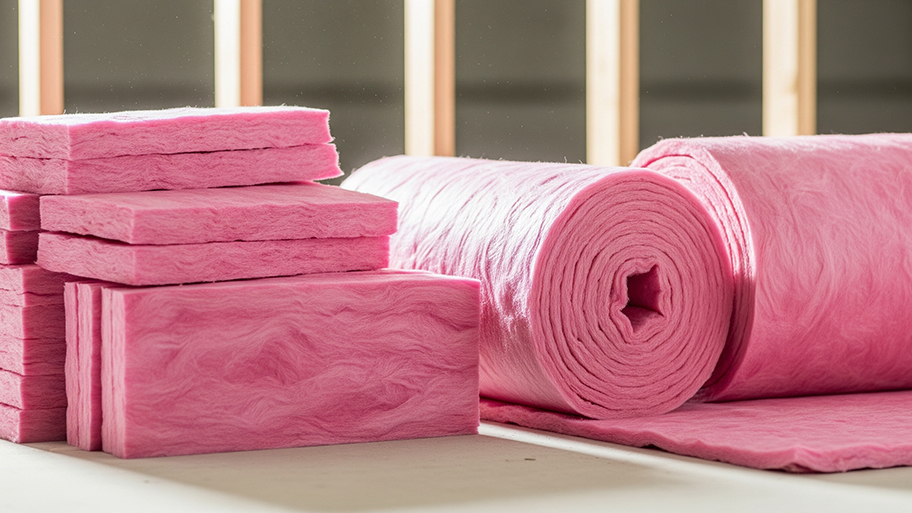
Learn the key factors that influence the cost of renting a blown-in insulation machine.
Is there a bit of asbestos lurking in your insulation?


Cellulose and vermiculite insulation are both types of blown-in insulation.
Cellulose comes from recycled paper products while vermiculite is a type of mineral.
Vermiculite is a potential safety hazard because it may contain asbestos.
Insulation comes in many forms and materials, with some having better reputations than others. If your home has blown-in insulation, you may wonder if you have cellulose or vermiculite insulation behind your walls. Vermiculite is a mineral insulation that may contain asbestos, while cellulose is made from recycled paper and poses no health risks. Learn more about the differences between these two insulation types.
One of the biggest differences between vermiculite and cellulose insulation is the materials they are made from. Vermiculite is a type of mineral while cellulose is a plant-based product typically made from recycled paper. However, vermiculite insulation may be contaminated with asbestos fibers, while cellulose insulation does not pose that risk.
| Type of Difference | Vermiculite | Cellulose |
|---|---|---|
| Appearance | Pebbly | Papery |
| Color | Gray | Gray-Brown |
| Material | Mineral | Paper |
| Safety | Possibly contaminated | No contamination |
| Era Used | Pre-1990 | 1990 to present |

Vermiculite and cellulose are similar types of blown-in insulation. Vermiculite is somewhat pebbly and a little rougher, while cellulose resembles fluffy, shredded paper.
Color-wise, vermiculite and cellulose insulation are similar. Both are often gray, although cellulose may also be more of a grayish-brown. Vermiculite may have a metallic sheen to it.
Vermiculite is a mineral, which explains its pebbly, nugget-like appearance. It's made from magnesium-aluminum-iron silicate and comes from mines around the world.
It's important to understand that vermiculite, on its own, is not asbestos. However, for years, the vermiculite that came from a particular mine was contaminated with a type of asbestos, making it a health risk. Since it's difficult to tell the difference between vermiculite, cellulose, and asbestos insulation based on appearance, if you have any reason to believe your insulation is contaminated, it's best to call a professional asbestos testing company near you.
Unlike vermiculite or asbestos, cellulose insulation comes from paper products, often recycled newspaper or cardboard. Cellulose is what gives cells their sturdiness and rigidity. It refers to the cell walls of plants.
If your home was built from the mid-20th century until about 1990, it could contain vermiculite insulation that is contaminated with asbestos. According to the Centers for Disease Control and Prevention (CDC), most of the vermiculite insulation used in the U.S. pre-1990 came from a contaminated mine.
If your home was built after 1990, it is less likely to contain vermiculite insulation and more likely to have cellulose or another material.

Vermiculite on its own isn't a dangerous mineral. However, the Environmental Protection Agency's advice is to assume that if your home has vermiculite insulation, that insulation is contaminated with asbestos.
In that case, you have few options to keep your family and home safe. The standard recommendation is to leave the walls alone. Don't open up insulated walls or try to remove the insulation, as doing so can stir up the fibers, releasing them into the air. When asbestos becomes airborne, someone may inhale its fibers, which can increase the risk of cancer.
If you need to work in an area with vermiculite insulation, contact a professional asbestos abatement company to ensure the material is handled safely.
Since cellulose comes from paper, it presents little health risks. However, many types of cellulose insulation are backed with boric acid or borax, which can cause irritation and other health concerns. Use caution when handling cellulose insulation and wear protective gear such as a mask, gloves, and goggles.
From average costs to expert advice, get all the answers you need to get your job done.

Learn the key factors that influence the cost of renting a blown-in insulation machine.

The cost to insulate a basement varies based on materials, size, and other factors, as well as how much of the work you wish to perform yourself.

Crawl space insulation costs vary by size, insulation type, and material. Read this guide to learn how much your crawl space insulation could cost.

There are 10 types of insulation you can use for your home. Read this guide to discover which insulation types could be best for the job.

Is fiberglass dangerous? Our guide walks you through the risks of working with fiberglass—and why it still makes sense as an insulation material for your home.

We’ll walk you through how to install spray foam insulation in your home—and when it makes sense to call in a pro.